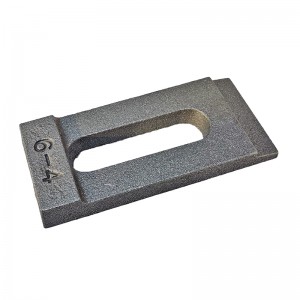נוב . 05, 2024 15:47 Back to list
colour metallography of cast iron
Colour Metallography of Cast Iron An Insight into Microstructural Analysis
Cast iron, an iron-carbon alloy with a carbon content greater than 2%, has been a significant material in engineering and manufacturing due to its excellent castability, wear resistance, and machinability. The diverse microstructures of cast iron, which can include lamellar graphite or spheroidal graphite, significantly influence its mechanical properties and applications. Understanding these microstructures can be greatly enhanced through colour metallography, a technique that uses color to reveal the microstructural features of materials.
Colour metallography employs the principles of optical microscopy, wherein specific colorimetric treatments are applied to etched samples. This method not only provides a vivid representation of the microstructural features of the material but also aids in identifying different phases present in cast iron. The enhancement of contrast through chemical etching allows for the visualization of features that would otherwise be indistinguishable in a standard microscopic examination.
Colour Metallography of Cast Iron An Insight into Microstructural Analysis
The resultant color variations generated through this etching process provide critical insights. For example, graphite appears black or shades of grey, while the matrix often reveals a spectrum of colors—ranging from blues to purples, depending on the specific phase and treatment. This colour differentiation gives metallurgists a powerful tool for assessing the distribution and morphology of graphite within the iron matrix, which are pivotal in determining the mechanical properties of the cast iron.
colour metallography of cast iron

One of the most commonly analyzed types of cast iron is grey cast iron, which is characterized by its flake-shaped graphite. Through colour metallography, one can study the size, shape, and distribution of these graphite flakes, which directly impact the alloy's tensile strength and ductility. Smaller, more uniformly distributed graphite flakes typically result in higher strength and toughness, characteristics that are vital for various industrial applications.
Another noteworthy type of cast iron is ductile iron, also known as spheroidal graphite iron. In this case, the graphite forms as spherical nodules instead of flakes, which provides substantially improved strength and ductility. Colour metallography allows for the evaluation of nodule count and size, essential indicators of the iron’s performance in applications such as automotive components and pipelines.
Moreover, colour metallography not only aids in the assessment of the quality and properties of cast iron but also plays a crucial role in quality control and failure analysis. For instance, identifying the microstructural features of a failed component can provide insights into the failure mechanisms—be it due to material fatigue, improper heat treatment, or issues related to manufacturing processes.
Additionally, advancements in digital imaging and software have further enhanced the capabilities of colour metallography. High-resolution imaging and analysis software can quantify microstructural features, providing statistical data that are invaluable for quality assessment and development of improved material grades.
In summary, colour metallography is a formidable technique for understanding the complex microstructures of cast iron. By utilizing color to highlight various phases and constituents, metallurgists can derive significant insights into the material’s properties and performance. This method is indispensable for the development of cast iron alloys tailored for specific applications, ensuring that industries have access to high-quality materials capable of meeting their demanding needs. As technology continues to evolve, colour metallography will undoubtedly remain at the forefront of materials science, offering enhanced precision and clarity in the evaluation of cast iron and beyond.
-
Durable Centrifugally Cast Iron Water Main Pipe
NewsAug.11,2025
-
Centrifugally Cast Iron Water Main Pipes for Reliability
NewsAug.10,2025
-
High-Quality Centrifugally Cast Iron Water Main Pipes
NewsAug.09,2025
-
Durable Cast Iron Water Main Pipe & Drainage Solutions
NewsAug.08,2025
-
Buy Cast Iron Pipe: Premium Ductile Iron & Drain Solutions
NewsAug.07,2025
-
Durable Cast Iron Water Main Pipe | Buy Ductile Pipe
NewsAug.06,2025


